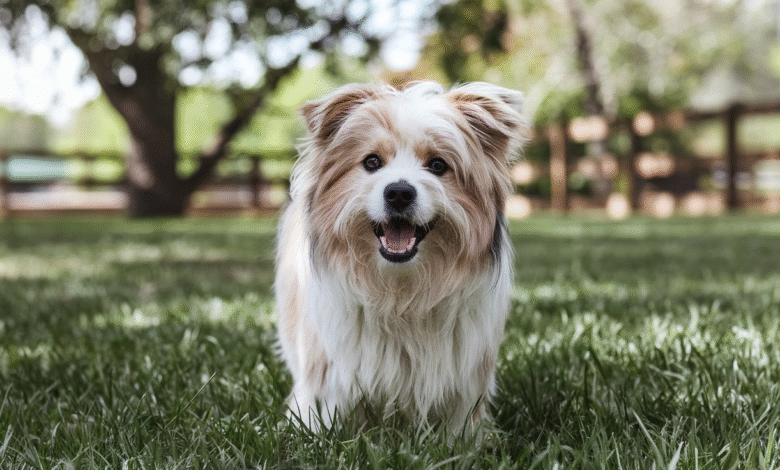Can Dogs Get the Flu from Humans? Everything You Need to Know to Keep Your Pup Safe

Can dogs get the flu from humans? Many pet owners worry about this, especially during flu season. The good news is that while dogs and humans can catch similar types of influenza, the flu viruses that commonly affect people usually do not infect dogs. Dogs have their own strains of flu, called canine influenza, which are different from the human flu virus. However, it’s always important to be cautious because close contact with sick humans or other animals can sometimes create a chance for viruses to spread in unexpected ways. Understanding how flu spreads and how dogs show symptoms can help you protect your furry friend. By learning the signs and preventive steps, you can make sure your dog stays happy and healthy, even when there are sick people around your home.
Even though the human flu rarely spreads to dogs, it’s possible for dogs to get sick from other dogs or animals. Canine influenza spreads mainly through coughing, sneezing, or direct contact with an infected dog’s saliva or nose secretions. Some common signs of flu in dogs include coughing, sneezing, runny nose, fever, loss of appetite, and tiredness. If your dog shows these symptoms, it’s important to contact a veterinarian right away. Simple hygiene measures, like washing hands before petting your dog, keeping sick humans away from pets, and cleaning shared surfaces, can reduce the risk of passing germs. Vaccines for canine flu also exist and can help protect your dog in high-risk areas. By understanding the differences between human and canine flu, and practicing good pet hygiene, you can ensure your dog stays safe and healthy, no matter what flu season brings.
What is Canine Flu and How is it Different from Human Flu?
Canine flu is a sickness caused by a virus that only affects dogs. It is different from the human flu because the virus that makes people sick usually cannot make dogs sick. Dogs have their own type of flu called canine influenza. Even though both humans and dogs can get fever, cough, and tiredness, the viruses are not the same. Canine flu spreads mainly between dogs, not from humans. Knowing this helps dog owners stay calm and take the right steps if their pet gets sick. Even though human flu does not normally infect dogs, it is still important to keep sick people away from pets. Keeping dogs healthy with vaccines, clean water, and good food can also help them fight illnesses, including canine flu.
Can Dogs Get the Flu from Humans? Understanding the Risks
Many dog owners worry and ask, can dogs get the flu from humans? The risk is very low because the flu viruses for people and dogs are usually different. Most dogs will not catch a cold or flu from humans. However, very close contact with someone who is sick might make it possible in rare cases if a virus mutates. Dogs can still get sick from other dogs or animals that carry canine influenza. Understanding this helps pet owners act safely. You should avoid letting sick people hug or kiss your dog and always wash your hands before touching them. Knowing the risks and taking simple steps can help protect your dog from any illness and keep your furry friend happy and safe.
Signs Your Dog Might Have the Flu
Dogs cannot tell us they feel sick, so we have to watch for signs of flu. Common signs include coughing, sneezing, runny nose, fever, tiredness, and loss of appetite. Some dogs may also show watery eyes or act restless and weak. These symptoms can appear within a few days of infection and may last for one to three weeks. If your dog shows any of these signs, it is important to keep them calm and contact a veterinarian. Early care helps prevent the flu from becoming serious. Observing your dog’s behavior every day and keeping track of changes can help you catch illnesses early. Being alert and responsive keeps dogs healthy and comfortable.
How Can Flu Spread Between Humans and Dogs?
Flu spreads in dogs mainly through coughing, sneezing, or touching surfaces contaminated by an infected dog. Dogs can share the virus when they are close together, sniffing, licking, or playing. Human flu rarely spreads to dogs, but germs from hands, clothes, or surfaces could still carry some risk in rare cases. Dogs can also catch flu from contaminated water bowls or toys if a sick dog touched them first. Understanding how germs move helps you reduce the chance of your dog getting sick. Cleaning shared spaces, washing hands, and keeping sick people away from pets are simple steps. Knowing how flu spreads ensures dogs stay healthy, even during flu season.
Preventing the Flu in Your Dog: Simple Steps
Preventing flu in dogs is easier than treating it. You can start by avoiding close contact between your dog and sick animals. Wash your hands before touching your dog, and clean their toys, bowls, and bedding regularly. Keeping your dog away from crowded dog parks during flu season is helpful. Feeding healthy food, giving clean water, and letting your dog rest also keeps their immune system strong. Some dogs may benefit from a canine flu vaccine, especially if they are in areas where the flu spreads quickly. By using simple preventive measures, you can greatly reduce the chance of your dog getting sick. Healthy habits help dogs live happy, active lives without unnecessary illness.
Vaccines and Treatments for Canine Influenza
Vaccines can protect dogs from getting the flu or make the illness less severe if they catch it. Not all dogs need a vaccine, but it is recommended for dogs in shelters, boarding facilities, or areas with outbreaks. If a dog gets the flu, a veterinarian may give fluids, rest, and medicine to ease symptoms. Antibiotics may be used if there is a secondary infection. Treating flu early helps dogs recover faster and prevents serious complications. Supportive care, like keeping your dog warm and hydrated, is very important. Vaccines and proper treatment together provide the best protection, so dogs can stay healthy even if the flu is around.
When to Call a Vet: Protecting Your Dog from Serious Illness
You should call a vet if your dog shows severe flu symptoms. High fever, constant coughing, trouble breathing, or extreme weakness are warning signs. A vet can check your dog, provide medicine, and recommend care at home. Early intervention can prevent complications like pneumonia. Even mild symptoms should be reported if they last more than a few days. Vets guide owners on the right steps for care, rest, and isolation from other pets. Protecting your dog from serious illness is easier when you act quickly. Knowing when to call a vet helps dogs recover faster and keeps them safe during flu season.
Conclusion
Dogs usually do not get the flu from humans because the viruses are different. Most dogs are safe, but it is still smart to take precautions during flu season. Watching for signs, practicing hygiene, and keeping sick people away helps keep dogs healthy.
Vaccines, clean food, water, and regular vet visits make a big difference. If your dog gets sick, early care is important. By knowing the risks and taking simple steps, you can protect your dog and keep them happy and playful all year.
FAQs
Q: Can humans give their flu to dogs?
A: Usually no, human flu viruses do not infect dogs.
Q: What are the main signs of canine flu?
A: Coughing, sneezing, fever, tiredness, runny nose, and loss of appetite.
Q: How can I protect my dog from the flu?
A: Wash hands, avoid sick people, clean bowls and toys, and consider vaccines.
Q: Is there a vaccine for canine flu?
A: Yes, especially recommended for dogs in high-risk areas or social settings.
Q: When should I call a vet if my dog is sick?
A: If your dog has high fever, trouble breathing, severe cough, or weakness.



